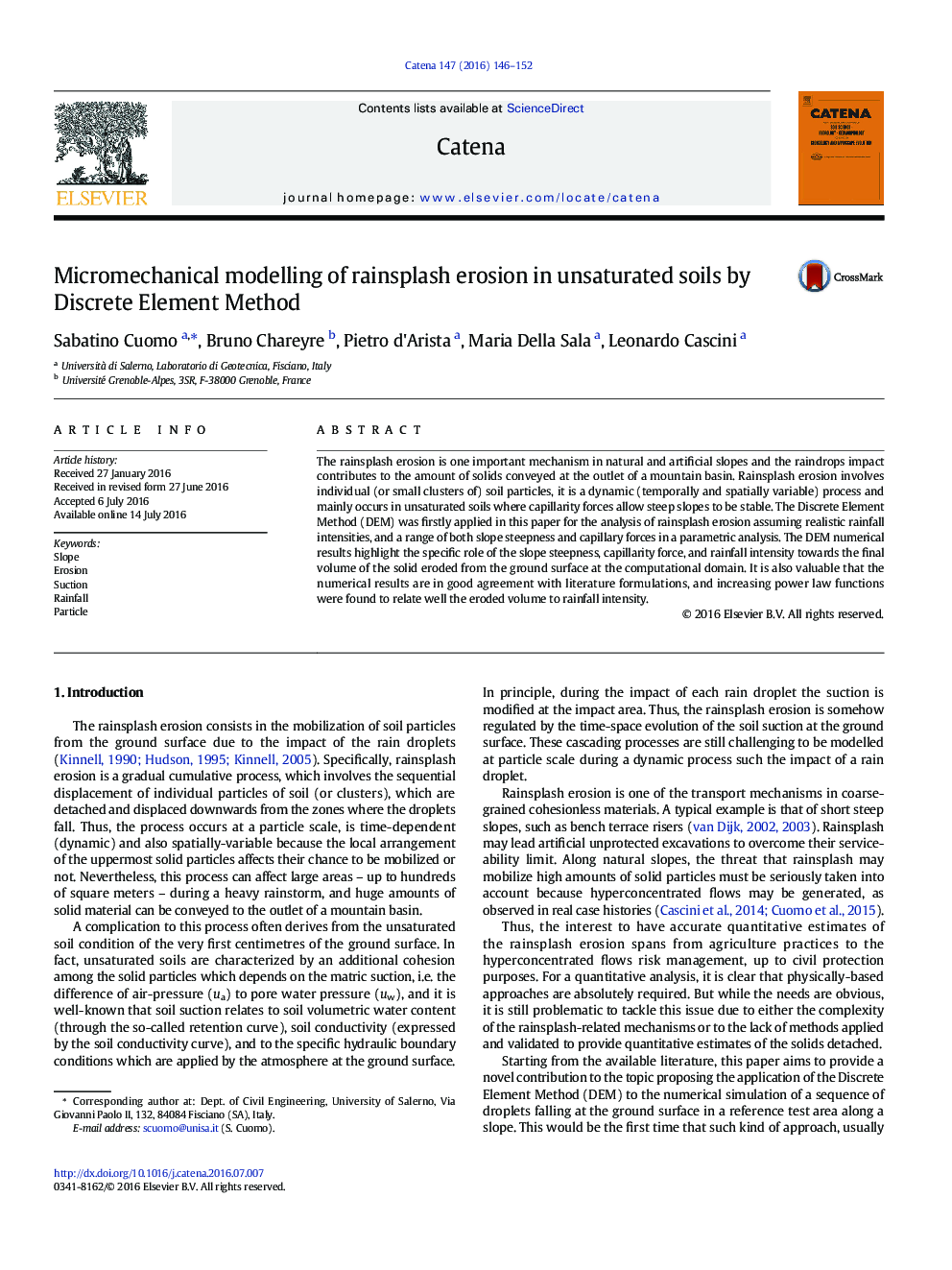| Article ID | Journal | Published Year | Pages | File Type |
|---|---|---|---|---|
| 6407697 | CATENA | 2016 | 7 Pages |
â¢DEM is applied to simulate rainsplash erosion.â¢Soil capillarity suction is taken into account.â¢Parametrical analysis is performed for a prototypal scheme of slope.â¢Numerical results well match some literature empirical relationships.â¢Power law for soil detachment rate versus rainfall intensity
The rainsplash erosion is one important mechanism in natural and artificial slopes and the raindrops impact contributes to the amount of solids conveyed at the outlet of a mountain basin. Rainsplash erosion involves individual (or small clusters of) soil particles, it is a dynamic (temporally and spatially variable) process and mainly occurs in unsaturated soils where capillarity forces allow steep slopes to be stable. The Discrete Element Method (DEM) was firstly applied in this paper for the analysis of rainsplash erosion assuming realistic rainfall intensities, and a range of both slope steepness and capillary forces in a parametric analysis. The DEM numerical results highlight the specific role of the slope steepness, capillarity force, and rainfall intensity towards the final volume of the solid eroded from the ground surface at the computational domain. It is also valuable that the numerical results are in good agreement with literature formulations, and increasing power law functions were found to relate well the eroded volume to rainfall intensity.
